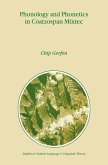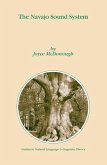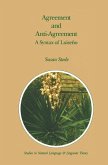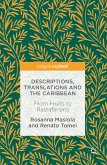Language Practices of Indigenous Children and Youth (eBook, PDF)
The Transition from Home to School
Redaktion: Wigglesworth, Gillian; Vaughan, Jill; Simpson, Jane
96,95 €
96,95 €
inkl. MwSt.
Sofort per Download lieferbar

48 °P sammeln
96,95 €
Als Download kaufen

96,95 €
inkl. MwSt.
Sofort per Download lieferbar

48 °P sammeln
Jetzt verschenken
Alle Infos zum eBook verschenken
96,95 €
inkl. MwSt.
Sofort per Download lieferbar
Alle Infos zum eBook verschenken

48 °P sammeln
Language Practices of Indigenous Children and Youth (eBook, PDF)
The Transition from Home to School
Redaktion: Wigglesworth, Gillian; Vaughan, Jill; Simpson, Jane
- Format: PDF
- Merkliste
- Auf die Merkliste
- Bewerten Bewerten
- Teilen
- Produkt teilen
- Produkterinnerung
- Produkterinnerung

Bitte loggen Sie sich zunächst in Ihr Kundenkonto ein oder registrieren Sie sich bei
bücher.de, um das eBook-Abo tolino select nutzen zu können.
Hier können Sie sich einloggen
Hier können Sie sich einloggen
Sie sind bereits eingeloggt. Klicken Sie auf 2. tolino select Abo, um fortzufahren.

Bitte loggen Sie sich zunächst in Ihr Kundenkonto ein oder registrieren Sie sich bei bücher.de, um das eBook-Abo tolino select nutzen zu können.
Examines the linguistic challenges indigenous children and young adults face in the classroom Analyses how schools correspond to the language ecology of the local community Explores complex issues faced by students and teachers alike
- Geräte: PC
- ohne Kopierschutz
- eBook Hilfe
- Größe: 4.95MB
Andere Kunden interessierten sich auch für
![Phonology and Phonetics in Coatzospan Mixtec (eBook, PDF) Phonology and Phonetics in Coatzospan Mixtec (eBook, PDF)]() H. GerfenPhonology and Phonetics in Coatzospan Mixtec (eBook, PDF)112,95 €
H. GerfenPhonology and Phonetics in Coatzospan Mixtec (eBook, PDF)112,95 €![The Navajo Sound System (eBook, PDF) The Navajo Sound System (eBook, PDF)]() J. M. McdonoughThe Navajo Sound System (eBook, PDF)72,95 €
J. M. McdonoughThe Navajo Sound System (eBook, PDF)72,95 €![Agreement and Anti-Agreement (eBook, PDF) Agreement and Anti-Agreement (eBook, PDF)]() Susan SteeleAgreement and Anti-Agreement (eBook, PDF)312,95 €
Susan SteeleAgreement and Anti-Agreement (eBook, PDF)312,95 €![Descriptions, Translations and the Caribbean (eBook, PDF) Descriptions, Translations and the Caribbean (eBook, PDF)]() Rosanna MasiolaDescriptions, Translations and the Caribbean (eBook, PDF)40,95 €
Rosanna MasiolaDescriptions, Translations and the Caribbean (eBook, PDF)40,95 €![The Linearization of Affixes: Evidence from Nuu-chah-nulth (eBook, PDF) The Linearization of Affixes: Evidence from Nuu-chah-nulth (eBook, PDF)]() Rachel WojdakThe Linearization of Affixes: Evidence from Nuu-chah-nulth (eBook, PDF)72,95 €
Rachel WojdakThe Linearization of Affixes: Evidence from Nuu-chah-nulth (eBook, PDF)72,95 €![Choctaw Verb Agreement and Universal Grammar (eBook, PDF) Choctaw Verb Agreement and Universal Grammar (eBook, PDF)]() William D. DaviesChoctaw Verb Agreement and Universal Grammar (eBook, PDF)72,95 €
William D. DaviesChoctaw Verb Agreement and Universal Grammar (eBook, PDF)72,95 €![Kalimantan's Ethnic Chinese Youth (eBook, PDF) Kalimantan's Ethnic Chinese Youth (eBook, PDF)]() Jessica KrukKalimantan's Ethnic Chinese Youth (eBook, PDF)112,95 €
Jessica KrukKalimantan's Ethnic Chinese Youth (eBook, PDF)112,95 €-
-
-
Examines the linguistic challenges indigenous children and young adults face in the classroom
Analyses how schools correspond to the language ecology of the local community
Explores complex issues faced by students and teachers alike
Dieser Download kann aus rechtlichen Gründen nur mit Rechnungsadresse in A, B, BG, CY, CZ, D, DK, EW, E, FIN, F, GR, HR, H, IRL, I, LT, L, LR, M, NL, PL, P, R, S, SLO, SK ausgeliefert werden.
Produktdetails
- Produktdetails
- Verlag: Palgrave Macmillan UK
- Seitenzahl: 417
- Erscheinungstermin: 24. Oktober 2017
- Englisch
- ISBN-13: 9781137601209
- Artikelnr.: 52936406
- Verlag: Palgrave Macmillan UK
- Seitenzahl: 417
- Erscheinungstermin: 24. Oktober 2017
- Englisch
- ISBN-13: 9781137601209
- Artikelnr.: 52936406
- Herstellerkennzeichnung Die Herstellerinformationen sind derzeit nicht verfügbar.
Gillian Wigglesworth is Redmond Barry Distinguished Professor at the University of Melbourne, Australia, and Chief Investigator for the Australian Research Council Centre of Excellence for the Dynamics of Language. She has worked extensively with Indigenous children growing up in remote communities in Australia, largely in the Northern Territory. Jane Simpson is Professor of Indigenous Linguistics at the Australian National University, Canberra, Australia, and Deputy Director of the Australian Research Council Centre of Excellence for the Dynamics of Language. Her research focuses on the structure and use of several Australian Aboriginal languages (Warumungu, Kaurna and Warlpiri), as well as English. Jill Vaughan is a postdoctoral fellow at the Norwegian University of Science and Technology, Norway. Her work in sociolinguistics and linguistic anthropology is concerned with multilingualism, contact and variation in Indigenous languages of northern Australia, and language practices in the context of the Irish diaspora.
- Chapter 1. Going to school in a different world; Jane Simpson and Gillian Wigglesworth.- Section I. CURRICULUM.- Chapter 2. Curriculum as Knowledge System: The Warlpiri Theme Cycle; Samantha Disbray and Barbara Martin.- Chapter 3. Language transition(s): school responses to recent changes in language choice in a Northern Dene community (Canada); Dagmar Jung, Mark Klein and Sabine Stöll.- Chapter 4. From home to school in multilingual Arnhem Land: The development of Yirrkala School's bilingual curriculum; Gemma Morales, Jill Vaughan and Merrkiyawuy Ganambarr-Stubbs.- Chapter 5. Unbecoming standards through Ojibwe immersion: The wolf meets ma'iingan; Mary Hermes and Michelle Haskins.- Section II. MULTILINGUAL REPERTOIRES.- Chapter 6. Code-switching or code-mixing? Tiwi children's use of language resources in a multilingual environment; Aidan Wilson, Peter Hurst and Gillian Wigglesworth.- Chapter 7. Languaging their learning: How children work their language for classroom learning; Susan Poetsch.- Chapter 8. Language Practices of Mbya Guarani Children in a Community-Based Bilingual School; Nayalin Pinho Feller and Jill Vaughan.- Section III. CONTACT LANGUAGES.- Chapter 9. Dangerous conversations: Teacher-student interactions with unidentified English language learners; Denise Angelo and Catherine Hudson.- Chapter 10. Dis, dat and da other: variation in Aboriginal children's article and demonstrative use at school.- Henry Fraser, Ilana Mushin, Felicity Meakins, and Rod Gardner.- Alyawarr children's use of two closely-related languages; Sally Dixon.- Section IV: LANGUAGE AS CULTURAL PRACTICE.- Chapter 12. Practicing Living and Being Hopi: Language and Cultural Practices of Contemporary Hopi Youth; Sheilah Nicholas.- Chapter 13. Learning a New Routine: Kaska Language Development and the Convergence of Styles; Barbra A. Meek.- Chapter 14. Beyond school: Digital cultural practice as a catalyst for language and literacy; Inge Kral and Sumathi Renganathan
- Chapter 1. Going to school in a different world; Jane Simpson and Gillian Wigglesworth.- Section I. CURRICULUM.- Chapter 2. Curriculum as Knowledge System: The Warlpiri Theme Cycle; Samantha Disbray and Barbara Martin.- Chapter 3. Language transition(s): school responses to recent changes in language choice in a Northern Dene community (Canada); Dagmar Jung, Mark Klein and Sabine Stöll.- Chapter 4. From home to school in multilingual Arnhem Land: The development of Yirrkala School's bilingual curriculum; Gemma Morales, Jill Vaughan and Merrkiyawuy Ganambarr-Stubbs.- Chapter 5. Unbecoming standards through Ojibwe immersion: The wolf meets ma'iingan; Mary Hermes and Michelle Haskins.- Section II. MULTILINGUAL REPERTOIRES.- Chapter 6. Code-switching or code-mixing? Tiwi children's use of language resources in a multilingual environment; Aidan Wilson, Peter Hurst and Gillian Wigglesworth.- Chapter 7. Languaging their learning: How children work their language for classroom learning; Susan Poetsch.- Chapter 8. Language Practices of Mbya Guarani Children in a Community-Based Bilingual School; Nayalin Pinho Feller and Jill Vaughan.- Section III. CONTACT LANGUAGES.- Chapter 9. Dangerous conversations: Teacher-student interactions with unidentified English language learners; Denise Angelo and Catherine Hudson.- Chapter 10. Dis, dat and da other: variation in Aboriginal children's article and demonstrative use at school.- Henry Fraser, Ilana Mushin, Felicity Meakins, and Rod Gardner.- Alyawarr children's use of two closely-related languages; Sally Dixon.- Section IV: LANGUAGE AS CULTURAL PRACTICE.- Chapter 12. Practicing Living and Being Hopi: Language and Cultural Practices of Contemporary Hopi Youth; Sheilah Nicholas.- Chapter 13. Learning a New Routine: Kaska Language Development and the Convergence of Styles; Barbra A. Meek.- Chapter 14. Beyond school: Digital cultural practice as a catalyst for language and literacy; Inge Kral and Sumathi Renganathan







